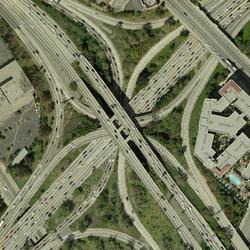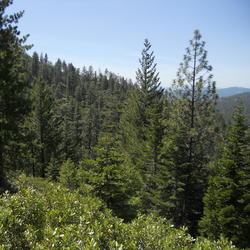Energy
Energy
What are the types of coal?
What is hydraulic fracturing?
How much wind energy does it take to power an average home?
What is geologic hydrogen?
The USGS conducts basic research on geologic energy resources including oil, gas, gas hydrates, geothermal, and coal.
Filter Total Items: 45
Is there an international wind turbine database available?
No. To our knowledge, the U.S. Wind Turbine Database (USWTDB) is unique. Other datasets might be available from other countries on an ad hoc basis, but we are not aware of any central repository of those data. For general information and statistics on international wind projects, see thewindpower.net.
Why isn't the turbine in my backyard included in the U.S. Wind Turbine Database?
The U.S. Wind Turbine Database (USWTDB) is designed to be a comprehensive source of information for utility-scale wind turbines in the United States; residential-scale turbines are excluded. We have removed turbines known to be residential scale and have excluded turbines that are both less than 65 kilowatts (kW) in rated capacity and less than 30 meters in total height. We are not aware of a...
How are wind turbine data collected?
The U.S. Wind Turbine Database project compiles wind turbine information from the Federal Aviation Administration (FAA), Lawrence Berkeley National Laboratory’s (LBNL) Wind Technologies Market Report dataset, the American Wind Energy Association’s (AWEA) wind turbine and project datasets, and the United States Geological Survey’s (USGS) legacy (2014) wind turbine dataset, as well as online sources...
How do I cite the U.S. Wind Turbine Database if I want to use the data?
We suggest the following citation for use in academic papers and where applicable: Hoen, B.D., Diffendorfer, J.E., Rand, J.T., Kramer, L.A., Garrity, C.P., Hunt, H.E. () United States Wind Turbine Database. U.S. Geological Survey, American Clean Power Association, and Lawrence Berkeley National Laboratory data release: USWTDB Version # (Version Date). https://eerscmap...
How often is the U.S. Wind Turbine Database updated?
The U.S. Wind Turbine Database (USWTDB) is updated every three months [or four times a year] and contains turbines that were installed as recently as 3 months preceding the update. Learn more: Wind Energy
How many turbines are contained in the U.S. Wind Turbine Database?
As of January 2022, the U.S. Wind Turbine Database (USWTDB) contains more than 70,800 turbines. These turbines have all been constructed since 1980 in approximately 1,500 wind power projects spanning at least 44 states (plus Puerto Rico and Guam). Learn more: Wind Energy
Can the oil and gas that the USGS assesses be produced today?
USGS oil and gas assessments are for technically recoverable resources, meaning they can be produced using today’s technology and standard industry practices. However, our assessments do not look at what infrastructure would be required to produce these resources, nor does it look at whether it would be profitable to produce them. In addition, USGS assessments are for undiscovered resources, which...
Does an assessment of the National Petroleum Reserve-Alaska mean there should or should not be oil and gas production in the Arctic National Wildlife Refuge?
The USGS is an unbiased, non-regulatory science agency, and therefore we do not advocate for or against oil and gas development in any location. The USGS role is to provide scientifically robust, publicly available estimates of potential resources so decision-makers have the best possible information to manage the Nation’s resources. Learn more: About USGS USGS Energy Assessments Alaska Petroleum...
How do the USGS and Bureau of Ocean Energy Management (BOEM) divide up which areas to be assessed for Oil and Gas Resources?
The USGS is responsible for oil and gas assessments onshore and in state waters (up to 3 miles offshore), while the Bureau of Ocean Energy Management (BOEM) assesses energy resources in the Federal offshore waters and the outer continental shelf. Learn more: USGS Energy Assessments
What is the difference between the National Petroleum Reserve-Alaska and the Arctic National Wildlife Refuge?
The National Petroleum Reserve-Alaska (NPR-A) is a roughly 23.4 million acre area of Federal land managed by the Bureau of Land Management. It lies in northwest Alaska and borders both the Chukchi Sea to the west and the Beaufort Sea to the north. The NPR-A was originally established in 1923 as a petroleum reserve for the U.S. Navy, then transferred to the Department of the Interior in 1976. The...
How does carbon get into the atmosphere?
Atmospheric carbon dioxide comes from two primary sources—natural and human activities. Natural sources of carbon dioxide include most animals, which exhale carbon dioxide as a waste product. Human activities that lead to carbon dioxide emissions come primarily from energy production, including burning coal, oil, or natural gas. Learn more: Sources of Greenhouse Gas Emissions (EPA)
Has the USGS made any Biologic Carbon Sequestration assessments?
The USGS is congressionally mandated (2007 Energy Independence and Security Act) to conduct a comprehensive national assessment of storage and flux (flow) of carbon and the fluxes of other greenhouse gases (including carbon dioxide) in ecosystems. At this writing, reports have been completed for Alaska, the Eastern U.S., the Great Plains, and the Western U.S. Learn more: Carbon Emissions and...













